Virtua Health Doubled Call Volume While Avoiding 100+ New Hires Through Voice AI
Virtua Health achieved 3.5x their anticipated ROI within the first year of implementing Parlance, while maintaining 92% employee retention in their 250-person contact center. Their call volume doubled from 200,000 to 400,000 annually, yet they avoided hiring an additional 100 FTEs through intelligent automation.
Malik Bahar, AVP of Operations, Virtua Health, started as a phone navigator 24 years ago and worked his way up through the health system ranks. He now leads a 250-person contact center serving New Jersey’s largest employer (15,000 employees) in a highly competitive market.
Scott D’Entremont, Parlance, represents a voice technology company with 25+ years of experience improving patient experience and health system business operations by delivering speech automation to the healthcare “front door.” Parlance has over 300 health system customers nationwide — thousands of hospitals and clinics use Parlance
Critical Data Points:
The Staffing Crisis Reality
- 92% employee retention rate at Virtua’s contact center (industry-leading)
- Contact center grew from 150 to 250 FTEs as demand surged
- Avoided hiring 100 additional staff despite doubling call volume
- In Malik’s words: “Everyone’s biggest expense walks in on two feet”
Consumer Behavior insights
- 72% of consumers still choose phone calls for fast customer service
- 71% of Gen Z agree phone calls are quickest for solving complex issues
- Despite billions invested in patient portals, voice demand hasn’t decreased
- For every online appointment scheduled, there are 2.1-2.2 follow-up phone calls
Operational Impact for Virtua Health
- 51% self-service rate initially, growing to 68% today
- Consistent performance with zero Saturday night emergency calls about system failures
- Enabled hospital operators increased bandwidth to focus on emergency management and ‘codes’
- Reallocated staff and resources to handle high-value patient needs
Pain Points Every Healthcare Leader Recognizes:
The Technology Paradox
Virtua’s data reveals a striking reality: as their online scheduling grew exponentially, phone demand continued rising simultaneously. This challenges the common assumption that digital adoption reduces call volume.
Competitive Pressure
Operating in South Jersey’s competitive healthcare market, Virtua faces pressure from traditional competitors plus new disruptors like Amazon, Apple Health, and CVS’s $20 billion consumer healthcare investment announced during the HCCT 2024 conference week.
The Service Experience Gap
Malik draws a powerful analogy to Chick-fil-A’s success: “The experience provided is worth the wait.” Healthcare organizations must deliver consistently excellent experiences across all touchpoints or risk losing patients to competitors who prioritize customer experience.
What Healthcare Leaders Will Learn by Watching this HCCT 2024 Keynote Presentation
Strategic Insights:
- How to position voice AI investments to C-suite leadership during budget discussions
- Why voice channel modernization is essential for health equity (serving patients who can’t or won’t use digital portals)
- Framework for vendor selection that ensures long-term partnership success
Tactical Implementation
- Specific metrics and KPIs that demonstrate ROI within 30 days
- How to maintain employee engagement during technology transitions
- Integration strategies that work with existing EHR systems
Future-Proofing Strategies
- Why voice remains the dominant channel across all generations, including Gen Z
- How to prepare for continued healthcare consumerization trends
- Building sustainable operations that scale with demand
The Human Element
Both speakers emphasize that successful voice AI implementation isn’t about replacing humans, it’s about empowering staff to work “at the top of their skillset” on complex, empathetic interactions while technology handles routine tasks.
Virtua’s approach includes “Connection of the Year” recognition where the CEO personally celebrates staff who deliver exceptional patient experiences, demonstrating how technology and human care can work together.
Why This Matters Now
With healthcare facing unprecedented staffing shortages, rising consumer expectations, and new market entrants, the window for proactive adaptation is narrowing. As Malik warns: “Now is the time to adapt… Don’t be like Blockbuster Video.”
This presentation offers a roadmap for healthcare leaders ready to transform their switchboard and contact center operations while maintaining the human touch that defines excellent patient care.


